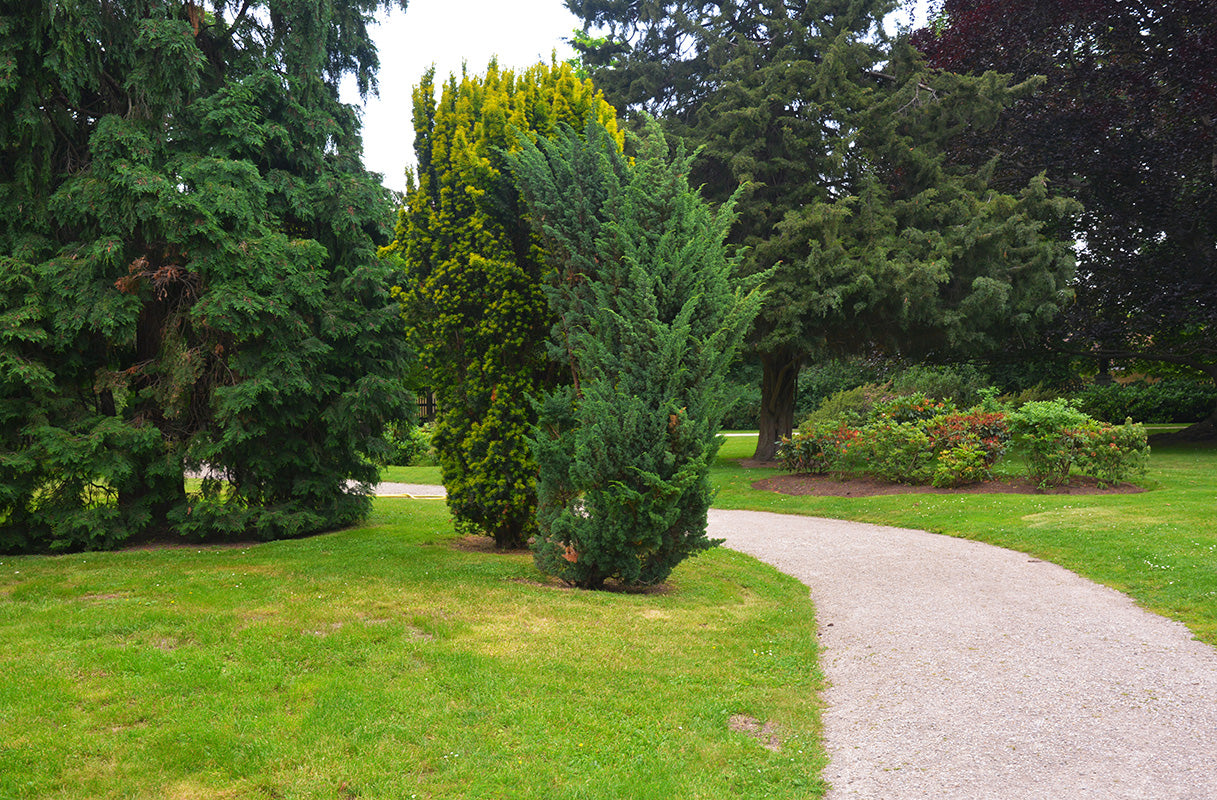Garden trends - fastigiate trees

Columnar or fastigiate trees that are naturally upright make striking vertical accents in gardens. Varieties such as the upright Irish yew have traditionally been used in formal planting, either side of a doorway or along a path. But contemporary designers are using these tall slim trees in more informal ways dotting them irregularly through planting.
Unlike standard trees with large canopies, columnar trees are ideal when space is tight, giving scale in small gardens with their spire-like habit providing a contrast to rounded plants. They also give a great sense of rhythm and structure, punctuating beds in larger gardens. Designer Tom Stuart-Smith gives the dark green verticals of Irish yews (Taxus baccata ‘Fastigiata Robusta’ ), a contemporary twist in the Italianate gardens at Trentham, Staffordshire, where they seem to march through the soft planting like giant figures in a landscape.
Italian cypress such as Cupressus sempervirens var. pyramidalis, are classically elegant fastigiate trees which work well repeated through Mediterranean planting to summon up holidays abroad.
Deciduous varieties add changing colour. Carpinus betulus ‘Frans Fontaine’, is a particularly neat upright hornbeam with bright green leaves in spring turning yellow and orange in Autumn. And for drama you could try columns of the purple beech Fagus sylvatica ‘Dawyck’.
Garden designer Lucy Conochie is a fan of using fastigiates as a way of incorporating more trees into smaller spaces. ‘Some of the best garden trees also have fastigiate cultivars’ she says, recommending Liquidambar styraciflua ‘Slender silouette’, Crataegus monogyna ‘Stricta’ and Ulmus hollandica ‘Wredei’.
Whether used as a feature plant, grouped or repeated, these wonderfully architectural vertical accents add a whole new dimension to your planting.











